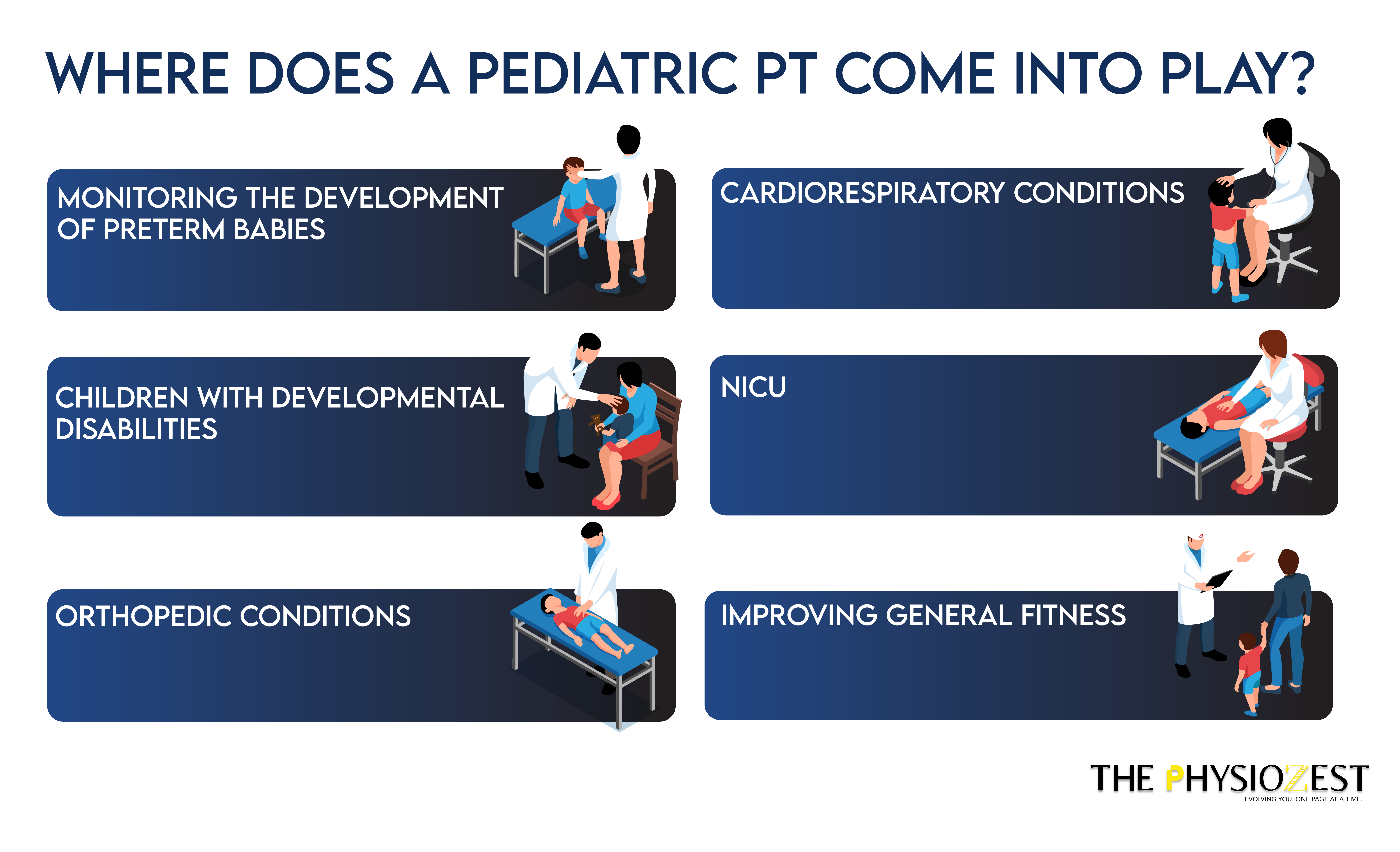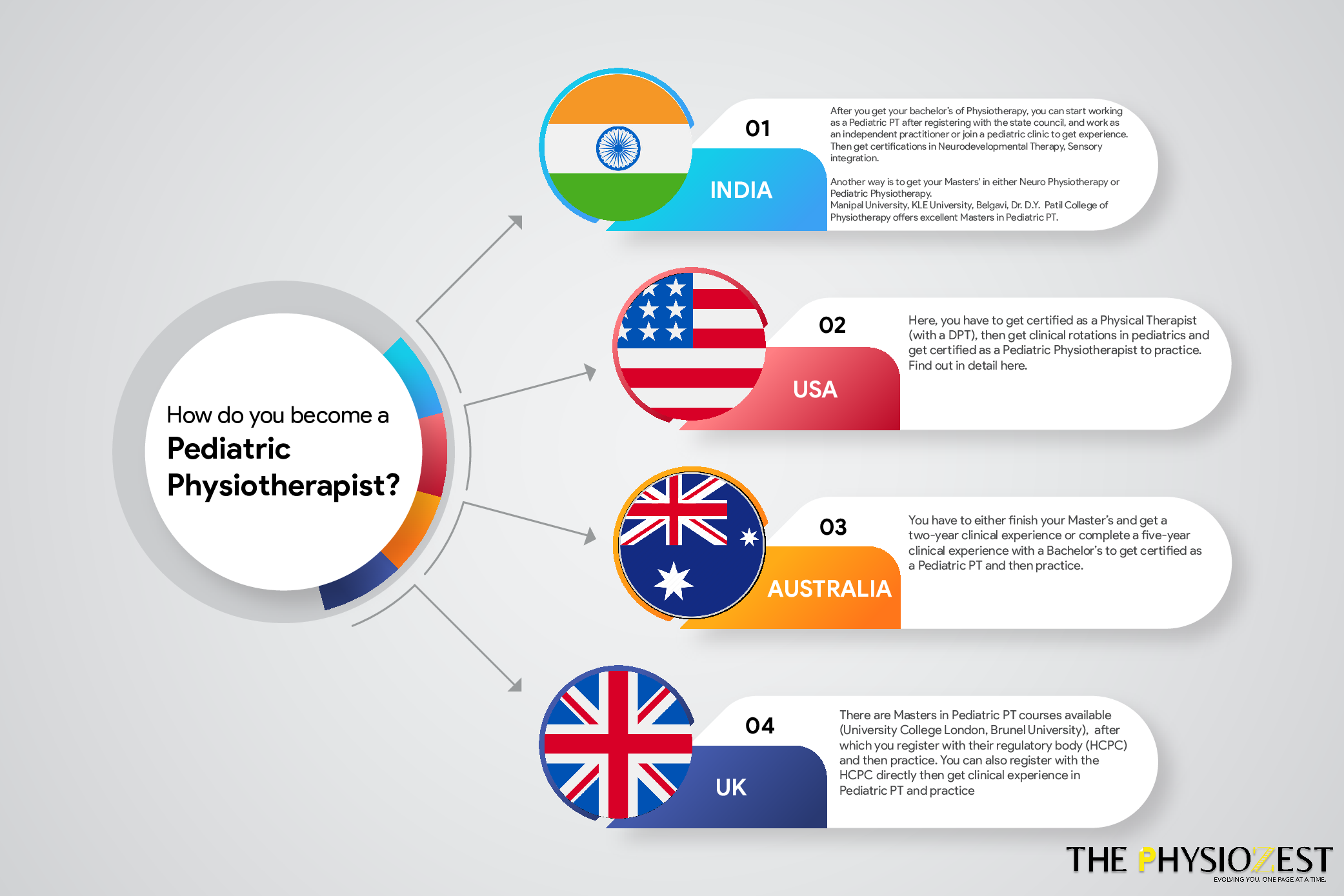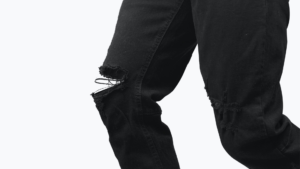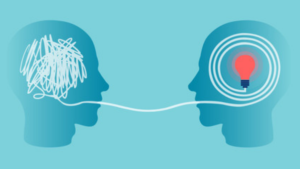
6.5 min read | Physical Therapy Rehab
Pediatrics: Physiotherapists’ Ignored Treasure
Written by Natasja Azad, Rucha Gadgil
Graphics by Kevin Thakkar
Audio by Ria Gorey, Param Sampat
Share this article
Peek Into

Ask a fresher on their first day about their idea of physiotherapy and they would all unanimously say- sports PT. Not their fault either, as the limited screen time our field does get is usually of a PT running with an ice spray to tend to a player injured on the field.
So picture my surprise when the PG student I was blindly following led us to a tightly swaddled baby in the postnatal ward, on our first day of postings. My world has never been the same.
Cut to years later and I’m happily enjoying my work as a Pediatric PT.
Why does no one talk about this enough?
Want to sign a petition to make an awareness ad campaign about pediatric physiotherapy? Anyone? No one?! *sigh*
Lack of awareness around this specialty often challenges young PTs to take the plunge. Not only students but patients too are in limbo on whether their kids need physical therapy for their issues or not.
Choosing to explore a not-so-popular specialty also requires proper guidance, evidence-backed by research, books, and experience- all of which are seldom available.
So, our readers, if the world doesn’t talk about it, The PZ of course would!
What is Pediatric PT?
Let’s unbox the mystery- “the role of Pediatric PTs”.
Pediatric Physiotherapy is the assessment, early intervention, and treatment of children up to 18 years of age. Therapists, here, have the task of influencing the way a child moves to help develop their neurons and their brain. Being able to move easily and successfully is essential for learning and growing. At the end of the day, the brain understands actions better.
What makes a “good” pediatric PT?
I would say it’s the ability to understand the child and establish a connection with children. They have to be ready to always think on their toes to keep the child engaged, at the same time, develop a rapport with the parents of the child. Not only that but also deal with barriers at the societal levels when planning a treatment program for the child1.
However, the job of a pediatric PT is not limited.
Where does a Pediatric PT come into play?

Pediatric Physiotherapy is a very fluid field, wherein, you have to keep learning and updating yourself with the latest trends not only academically but in terms of the latest cartoons and games
Let’s get a little filmy to understand better. Remember Ishaan Awasthi from Taare Zameen Par? Well, he was fortunate to find immense support from his teacher (played by Aamir Khan). But had he been a real child with learning disabilities, he would require a strategic multidisciplinary approach to get better. He would have needed a full medical team of a pediatrician, neurologist, behavioral, occupational, and physical therapist along with understanding parents to fully assimilate into society.
The treatment methods for each child may differ greatly, ranging from Neurodevelopmental techniques to sensory integration, to more specialized techniques like hippotherapy (using horses in therapy) and aquatherapy.
How do you become a Pediatric Physiotherapist?
Concise data on how you could opt for this specialty based on where you live:

India: After you get your bachelor’s of Physiotherapy, you can start working as a Pediatric PT after registering with the state council, and work as an independent practitioner or join a pediatric clinic to get experience. Then get certifications in Neurodevelopmental Therapy, Sensory integration.
Another way is to get your Masters’ in either Neuro Physiotherapy or Pediatric Physiotherapy.
Manipal University, KLE University, Belgavi, Dr. D.Y. Patil College of Physiotherapy offers excellent Masters in Pediatric PT.
America: Here, you have to get certified as a Physical Therapist (with a DPT), then get clinical rotations in pediatrics and get certified as a Pediatric Physiotherapist to practice. Find out in detail here.
Australia: You have to either finish your Master’s and get a two-year clinical experience or complete a five-year clinical experience with a Bachelor’s to get certified as a Pediatric PT and then practice.
UK: There are Masters in Pediatric PT courses available (University College London, Brunel University), after which you register with their regulatory body (HCPC) and then practice. You can also register with the HCPC directly then get clinical experience in Pediatric PT and practice.
What & How?
As a Pediatric Physiotherapist, you can expect job opportunities in schools (not just special schools), private clinics, hospital departments, NGOs (specializing in children).
Pediatric PT is practiced differently in different places. Some places offer regular sessions ranging from 30 mins to 2 hourly with a break in between. There are also instances where intensive PT is prescribed, wherein, the child undergoes a rigorous PT session for a couple of weeks, followed by a break for some time. The pediatric PT should be able to adapt to provide these multiple types of practices depending on the condition of the child.
When I asked a Pediatric PT, what makes it worth it?
Their response was, “The children do”.
You often think of children as mini-adults, but that’s a wrong notion. Children are their own individuals and the joy that you get when they achieve a milestone is unparalleled. You can ask any pediatric therapist why they do what they do, their answers will range from, “It gives us a chance of becoming children again”, to “ We get to think outside the box”.
Do you need to like children to become pediatric PT?
The answer is no, you don’t. But you need to enjoy working with them, same as in any other occupation. The need for pediatric PTs is on the rise but before that what needs to be tackled first is the awareness regarding it.
How do we go about improving this awareness, in parents, other Healthcare professionals, and the general public?
When you look at it, “Pediatric Physiotherapy is indeed a mountain, but one that can be scaled with dedication and determination”.





